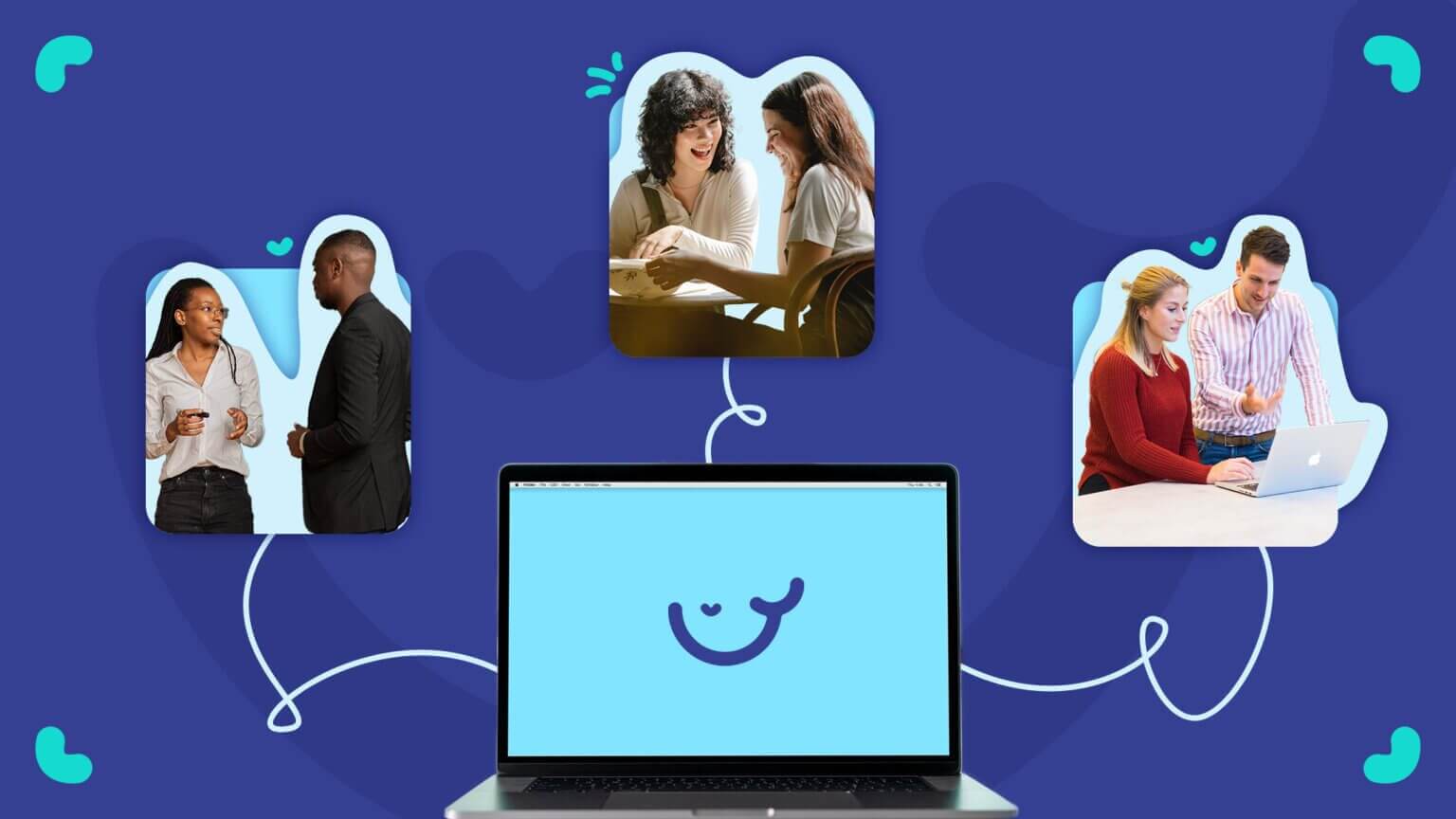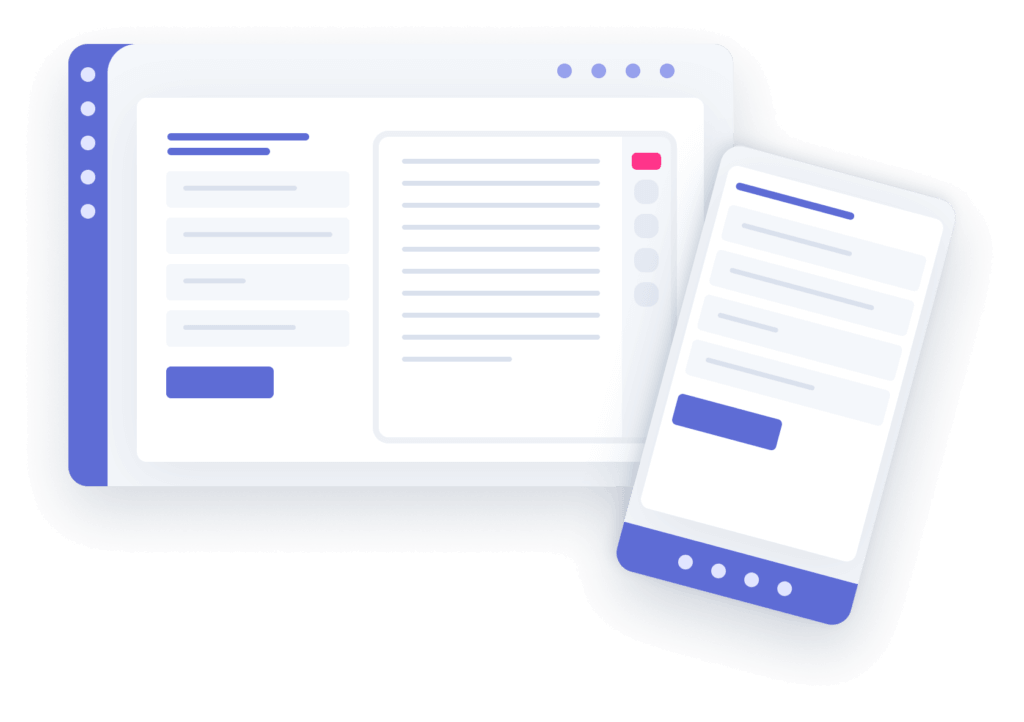So what is employee onboarding and training?
Employee onboarding and training are essentially different parts of the same function; employee experience. They also form or should form, part of any talent retention process, especially if you’re serious about retaining your top talent.
A study found that 30% of employees leave their jobs within 90 days (Employ), so you’ll want to maximize the employee experience from the get-go!
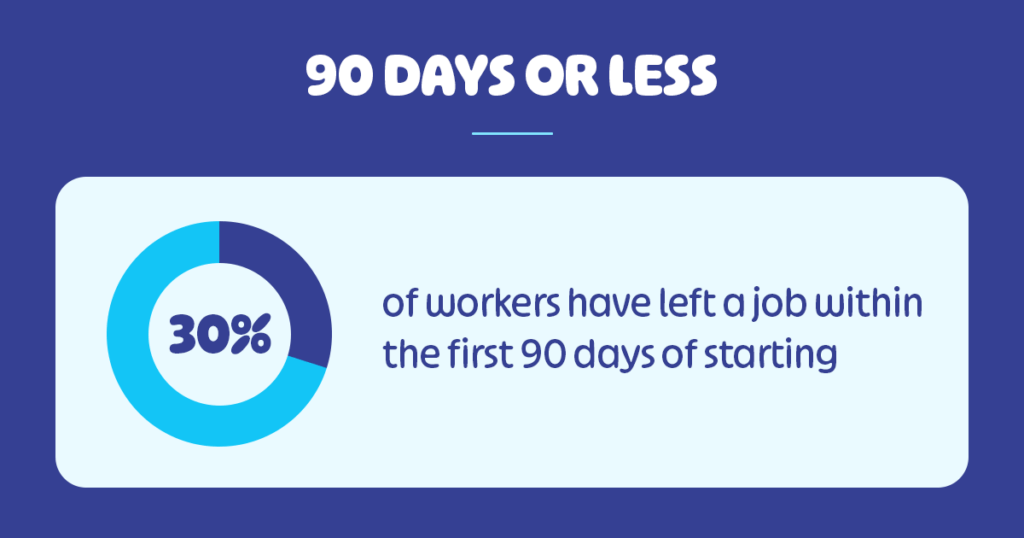
Let’s look at a few ways you can measure your onboarding process.
What is the difference between employee onboarding and training?
You’ve likely charted the course of your customer journey. However, have you given due attention to your employee experience?
Within the intricate realm of human resources (HR) and organizational development, two pivotal aspects significantly influence success: the onboarding and training of employees.
Though these components are interconnected, they fulfill distinct roles in the employee’s journey. Achieving proficiency in both is the initial stride toward fostering content and efficient staff, contributing to a flourishing business.
So, what’s the difference between employee onboarding and training?
Employee onboarding is typically defined as the first 90 days of employment and tenure, whereas any team training post is referred to as employee training.
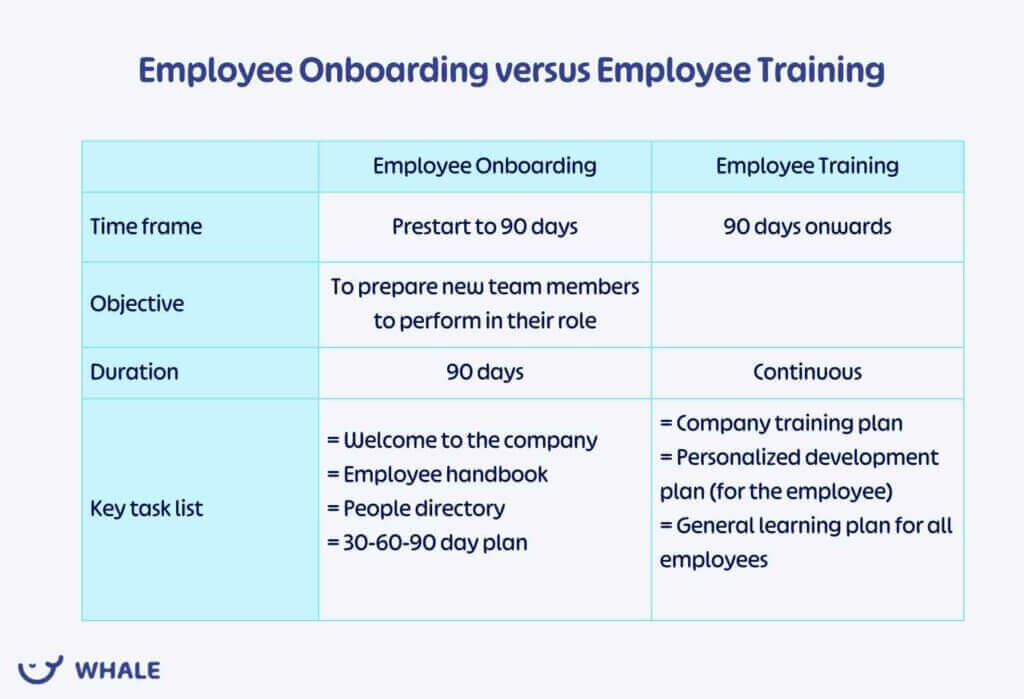
How is AI influencing employee onboarding and training?
This is the topic HOT on everyone’s lips! AI is changing the game, not just generally and in productivity but specifically in relation to employee onboarding and training.
With AI, training content creation becomes that much easier!
Sharing training materials becomes that much easier.
And even testing knowledge becomes that much easier.
We dedicated a large portion of 2023 to the development of our AI Assist feature and also released the AI Quiz feature.
Having an employee portal that features a centralized knowledge base equipped with AI-powered search capabilities and suggestions significantly enhances the onboarding experience.
And most importantly, the time taken to complete tasks.
Let's talk employee onboarding
Do you remember your first day at work?
Was it great? Was it terrible? Well, that’s employee onboarding.
It actually starts before a new hire’s first day but extends to the first three months of a new employee’s tenure.
Onboarding isn’t just about completing paperwork or receiving a desk; it’s an immersive experience designed to help new hires get cozy in their new company’s environment.
Check out how these brands transformed their employee onboarding experience.
How does employee onboarding impact business growth?
Great employee onboarding isn’t just about feeling good. It’s about business growth.
Here’s how great employee onboarding impacts business growth, it;
- Impacts employee performance
- Results in faster ramp uptime and productivity
- Ensures better employee retention
- Fosters relationship building
“Effective onboarding can get employees to full productivity up to 34% faster.” (eLearning) And yet only 29% of new hires say they feel fully prepared and supported to excel in their role after their onboarding experience.” (Gallup)
The bottom line (excuse the pun) goes something like this:
Understanding new hires
The thing is that your new hires are Dory’s.
They’re probably super excited to join your team and are eager to learn and get started on their mission but there’s ALOT to take in. Just as Dory struggles to retain crucial details, new employees may find themselves overwhelmed by the influx of knowledge, procedures, and expectations during their onboarding process.
So you’ve got to ease into the onboarding process with new hires.
You’ve got to set realistic expectations, phase the onboarding process and make sure that information is available to new hires in such a manner that they aren’t overwhelmed or left feeling lost.
What are common onboarding mistakes?
Before you know what you need to do in order to onboard new hires. You need to know what NOT to do!
Here are 6 onboarding mistakes to avoid;
- Mistake no 1. Waiting until the first day to start onboarding
- Mistake no 2. Unorganized onboarding process
- Mistake no 3. Lackluster reception
- Mistake no 4. Having no onboarding process beyond week one
- Mistake no 5. Not giving new hires a chance to share feedback
- Mistake no 6. Not setting clear expectations
Now let’s turn to how to really help new hires get the best out of their new employee experience.
How the 5'cs of employee onboarding help new hires
So how do you help combat overwhelm for new hires? The answer is a great onboarding processes that really prioritizes the employee experience.
Gartner states that only 12% of employees strongly agree their organization does a great job of onboarding new employees. If you’re going to set your new team members up for success, you need to master the 5C’s of Employee Onboarding.
Sounds super technical? It really isn’t. This is simply an approach to best practice. In other words, if you cover the following aspects well in your onboarding process, you’re far more likely to achieve success.
And retain your top talent!
Did we mention that a Click Boarding study found employees are 58% more likely to stay with a company for three years if they have a structured onboarding program?
So you’ll want to get these right!
1. Culture
Introduce new hires to the company’s culture, values, and norms. This includes fostering a sense of belonging and helping employees understand the company’s mission, vision, and overall work environment. Integrating employees into the organizational culture enhances their engagement and satisfaction.
2. Clarity
Clearly communicate the expectations and responsibilities associated with the new role. This involves discussing job duties, performance expectations, and any key performance indicators. Providing a clear understanding of what is expected helps the employee settle into their new position more quickly.
3. Connection
Facilitate connections between the new employee and colleagues, managers, and other key individuals within the organization. And maybe even consider assigning a work buddy. Encouraging social interactions helps build relationships, provides support, and creates a sense of community, which is vital for employee retention and job satisfaction.
4. Compliance
Ensure that new employees understand and comply with the company’s policies, procedures, and legal requirements. This includes providing information on workplace regulations, safety guidelines, and any industry-specific compliance standards.
5. Checkback
Regularly check in with new employees to gather feedback, address concerns, and assess their overall experience during the onboarding process. This ongoing communication helps identify any issues early on and allows for adjustments to be made, contributing to long-term employee success and satisfaction.
6. And confidence!
While “confidence” is not traditionally listed as one of the 5 C’s of employee onboarding, it is certainly an important aspect that needs to be considered.
Foster a sense of self-assurance in new employees by providing them with the necessary tools, resources, and training to excel in their roles. This includes comprehensive orientation programs, skill development opportunities, and ongoing support. Encourage open communication, make them aware of available resources, and let them know that it’s okay to seek help when needed. Building confidence in new hires contributes to their overall job satisfaction and performance.
What about Remote Employee Onboarding? Does it still matter?
Yes, remote employee onboarding still matters! As of 2023, 12.7% of full-time employees work from home, while 28.2% work a hybrid model. (Forbes)
This makes the case that a good remote employee onboarding program is still important!
Typically remote onboarding is done via technology without any face-to-face interactions. It makes it all the more difficult to really engage team members and to create a great employee experience.
But it’s not impossible!
In the case of remote employees, make sure to;
- Start with a plan which includes an orientation schedule
- Communicate expectations
- Leverage Technology to your Advantage
- Focus on Culture
- Consider training
- Set Expectations
- Clearly Define Roles and Responsibilities
And don’t forget to create and provide feedback loops!
What are common Gaps in Employee Onboarding Programs?
Here are 4 common challenges with typical onboarding programs and how to avoid them;
1. Complex onboarding programs 😒
Excessive paperwork, information overload, and too many manual processes make onboarding complicated and it can overwhelm new employees.
2. Technology knowledge gaps 🖥️
Technology training must not be overlooked during onboarding to get your new hires up to speed rapidly. Creating SOPs on the various software your business utilizes will optimize working efficiency.
3. No company culture introduction 💔
Employees are 50% less likely to quit when they feel a strong sense of belonging within the company so you need to make sure that team members are adopted into the culture from the get go.
4. Lack of continuous communication 🤐
The onboarding process shouldn’t end after their first day or week. Checking in with new hires and their progress is a must, so any issues or difficulties are resolved immediately.
Elements of a good employee onboarding program?
There aren’t any secrets to employee onboarding. It just needs to be done properly, and should consider a wide range of stakeholders as well as components.
Questions to ask include;
- Who needs to be involved in onboarding a new hire?
- What is our onboarding process?
- What technology is needed to make this happen?
Components will include;
- Orientation sessions
- Introductions to team members
- Company Policies
- Administrative procedures
- The Employee Handbook
A staggering 60% of employees don’t read the employee handbook when joining. Why? Because generally, they’re boring.
When creating your company’s employee handbook, don’t use old boring handbooks that smack of detail and use too much technical jargon ❌.
Make it fun and engaging and try to package it in a way that your new hires will want to read.
Include things like
- Your Purpose statement
- Values
- Mission
- The Company Story
- Way of doing business (Yes, we even have our Spotify Playlist in ours!)
The best way to combine all the elements of a good onboarding program is to do so in a 30-60-90 day plan.
The 30-60-90 day onboarding plan
You’ll want a 30-60-90 day plan because the first 90 days for any new hire will set a key foundation for the rest of their time at the organization.
Before your new hire starts;
- Send an agenda for the first day: Provide a clear outline of what new hires can expect on their first day, including any scheduled 1:1 meetings, demonstrations, or training sessions that are relevant to their role.
- Share manuals and instructions for setting up corporate accounts: Provide detailed guidance on how to set up necessary corporate accounts, such as company email or other relevant systems.
- Provide a digital copy of the employee handbook: Give new hires access to your employee handbook, allowing them to review it beforehand and come prepared with any questions they may have.
And then make sure you have the next 90 days planned. It’ll help your new hire feel at ease, and you and your team too!
Your ultimate employee onboarding checklist
Okay, so this all sounds a lot, right? It isn’t.
We’ve put it all into one simple employee onboarding checklist and have it all already mapped out for you on Whale.
Your checklist consists of;
- Pre-onboarding (Before 1st day)
- Welcoming and orientation (1st day)
- Training (1st week+)
- Transitioning employee onboarding checklist (1st month+)
Most companies stop training after the first few weeks. However, the Allied Workforce Mobility Survey found that it takes new hires eight months on average to be fully productive. So don’t stop at onboarding, you’ll want to get your sights on a successful employee training program too!
Don't forget to measure
Establishing a robust onboarding process lays the foundation for content and engaged employees who not only remain with your company but also recommend high-caliber talent. According to research by the Brandon Hall Group, a well-executed onboarding process contributes to an impressive 82% employee retention rate. However, achieving such outcomes may not happen seamlessly on the initial attempt or even the subsequent one. 😬
The most effective onboarding programs undergo constant measurement, testing, and refinement.
The question then arises: How do you measure the success of your employee onboarding process to enhance its efficacy for both you and your team?
Here are some key metrics to consider;
- New employee turnover
- Onboarding survey results
- Time to productivity
- Onboarding completion rate
- Engagement levels
And you could even tie your employee onboarding program to your talent retention rate.
Future-Ready HR:
A Guide to Using AI and Automation for Training
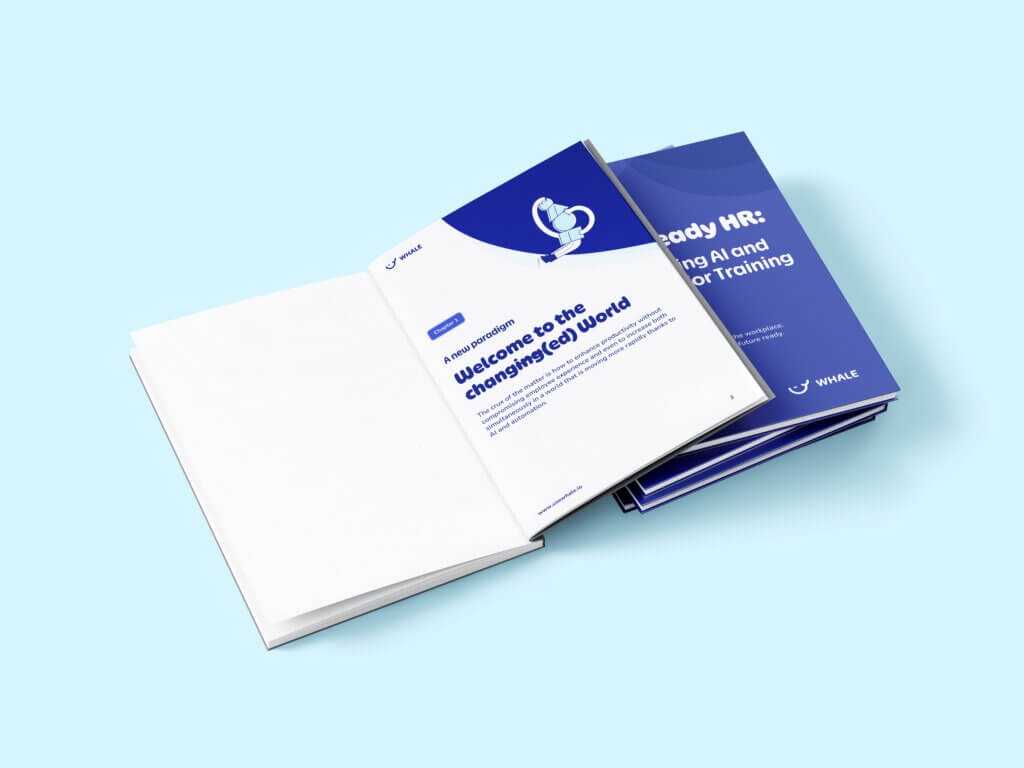
We interviewed the top human resource experts to discover AI and HR trends for the future.
Download the whitepaper to discover how AI and automation can revolutionize onboarding and training, empowering you to develop a future-ready workforce today!
Let's talk employee training
While the onboarding process is an essential aspect to getting a new hire up to speed in the workplace, this is by no means where their learning should end.
Employee training is a systematic process of developing an employee’s skills, knowledge, and competencies to perform their job effectively. It involves targeted learning initiatives designed to enhance job performance and contribute to individual and organizational success.
Employee Training should be offered to employees after the initial period of onboarding is over. And it should form an integral part of a team member’s development.
For how long do you need to provide your team with training? FOREVER! Well, rather, for as long as their tenure with the company. The more team members learn, the faster a company grows. It’s that simple.
What are the benefits of employee training? Or perhaps never considered
We could literally write a book on the benefits of training your employees. But don’t worry, we don’t plan to.
The obvious ways employee training can benefit your teams is through
- Increased skills development
- Employee engagement
- Efficient processes
Or company growth as a result of the above 3 elements. But what about things like?
Encouraging Innovation and Creativity:
- How: Training that fosters a culture of continuous learning can inspire employees to think creatively and contribute innovative ideas. It empowers them to explore new approaches and solutions to challenges.
Improving Customer Satisfaction:
- How: Well-trained employees are better equipped to provide excellent customer service. This, in turn, contributes to higher customer satisfaction and loyalty.
What are the three types of training?
While the specific categorization of employee training programs may vary across organizations, here are three common types:
Purpose:
Introduces new hires to the organization, its culture, policies, and procedures.
Content:
Typically covers basic job responsibilities, company values, mission, vision, and relevant administrative information.
Duration: Generally occurs during the initial days or weeks of employment.
Purpose: Continues the development of employees throughout their tenure to enhance skills, update knowledge, and adapt to changes.
Content:
Focuses on job-specific skills, industry trends, technology updates, leadership development, and other relevant areas.
Duration:
Regular and ongoing, often through workshops, seminars, online courses, or continuous learning programs.
Purpose: Provided during times of organizational change, such as mergers, restructurings, or the implementation of new systems or processes.
Content:
Aims to help employees adapt to new roles, technologies, or organizational structures.
Duration:
Occurs during transitional periods and is designed to facilitate a smooth transition for employees.
These categories can overlap, and many organizations use a combination of these training types to create a comprehensive and effective employee development program.
Additionally, other types of training may be implemented based on specific organizational needs, such as compliance training, safety training, or diversity and inclusion training.
How to make Employee Training stick?
Let’s ask you this question; Would you rather watch Netflix or read a 72-page training manual?
Yup, we figured. It’s the same for your team members.
Next question; What did you have for dinner last week Tuesday?
Don’t remember. Neither can your team remember what you told them last Tuesday. If you’re going to overcome the forgetting curve and really help employee training stick, you’re going to have to give them a reason to want to learn and utilize technology to make it easier.
✅ Use Microlearning Tactics
Create short video tutorials, engaging infographics, or interactive quizzes for on-demand access. This approach accommodates busy schedules and empowers employees to learn at their own pace.
✅ Use the Netflix Effect
Gone are the days of monotony and yawn-inducing training sessions; today, organizations are adopting a fresh approach to onboarding and training employees. If series can be gripping and binge-worthy, then why can’t learning experiences? Use The Netflix Effect to create engaging training that your team members will remember.
✅ Utilize regular Assessments and Feedback
Use quizzes or performance evaluations to gauge employee progress and comprehension. Implement some of these performance review phrase examples to ensure that feedback is specific, actionable, and geared towards growth. The data you gather will help tailor future training sessions and address specific areas of weakness. A dynamic and responsive learning process minimizes the effects of the forgetting curve. The data you gather will help tailor future training sessions and address specific areas of weakness. A dynamic and responsive learning process minimizes the effects of the forgetting curve.
How to create a learning culture?
A learning culture refers to an organizational environment or mindset that promotes and values continuous learning and development among the team.
Research from Bersin by Deloitte demonstrated that learning organizations, or those that focus on a learning culture, are;
- 92% more likely to innovate
- 46% more likely to be the first to market
- 17% more likely to be the market share leader
Ok, so learning is important, but how do you create it as a culture?
Here’s a quick learning culture checklist to help you implement learning in your business;
- ✅ Align learning with company goals
- ✅ Identify gaps and ask for input
- ✅ Empower subject matter experts
- ✅ Start from Day 1
- ✅ Incorporate Learning into Workflows
- ✅ Make knowledge-sharing a habit
- ✅ Keep learning updated
- ✅ Build your company knowledge as an asset
When it's time to reconsider your employee training strategy?
Who’s got time to worry about an employee training strategy when you’re trying to scale your business? But iif set up right, your employee training strategy is one of the key elements that’s going to have your team performing at the top level!
What’s the difference between an employee training program and an employee training strategy?
The difference is that your employee training program is a single program, whereas the strategy directs how learning is done as a whole within the organization.
Whether you’re starting from scratch or redoing your training strategy, here are the 5 steps to having a real impact.
1. Identify objectives
It’s critical to link employee training to the objectives of the business and maintain alignment. Consider things like;
What are the objectives of the company?
What skills does the company need?
What skills does the individual need to perform?
What skills will the individual need in the future?
2. Define Learning Objectives
Set clear learning objectives for your training program.
Learning objectives define what employees should be able to do after completing the training. Ensure these objectives are Specific, Measurable, Achievable, Relevant, and Time-bound (SMART).
3. Design and Develop Training Materials
Remember to design materials that cater to the unique learning needs of your employees, with a strong focus on aligning content with your training objectives. Nowadays, creating engaging training content is no challenge whatsoever.
4, Implement with Tech
Your employee training technology should not only assist you in the creation of training content but also in the delivery. Thereafter the software you utilize should give you metrics on the effectiveness of the training delivered.
5. Evaluate the Training
It’s important to measure the effectiveness of your employee training strategy is delivering on the objectives set in the beginning.
Software for employee onboarding and training
Even if you decide not to use Whale, we seriously recommend that you use software for employee onboarding and training. We Whale, not just because we believe in it but because we actually couldn’t live without it ourselves.
Whale helps you
Tell your story
Create your customized onboarding program and introduce new team members to your company story, values, and policies, resulting in a great first impression.
Store your training content
Create and store all your training in one easy, intuitive system. And you can customize and personalize your Whale environment to seamlessly extend your brand’s identity. 🐋🎨
Set Automated Training Flows
Whale’s automated training flows mean that you can design custom training journeys for different teams and roles and rely on the automation features to save you time. And your teams can access the training wherever and whenever.
Test Knowledge Retention 🚀🧠
Test the knowledge of your team members and identify potential areas for improvement. Reinforce your team’s learning journey with automated quizzes that keep knowledge assessment engaging and timely!
Bottom line?
As we wrap up our journey through the intricate realm of employee onboarding and training, let’s not forget that learning is not a destination; it’s a lifelong adventure.
In the ever-evolving landscape of professional development, consider fostering a culture that not only values continuous learning but thrives on it. Imagine a workplace where curiosity is the compass, and every challenge is an opportunity for growth. So, as you embark on this odyssey of knowledge dissemination and skill enhancement, remember: the greatest asset of any organization isn’t just its products or services; it’s the empowered minds and skilled hands that bring them to life.
Happy onboarding, and may your training endeavors be as boundless as your team’s potential!


